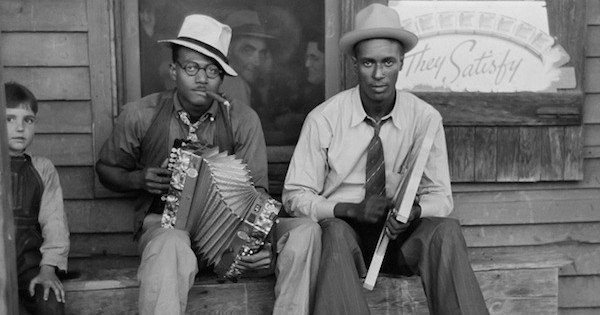
Not long ago, listening to performers from Chicago’s Old Town School of Folk Music, I heard an unusual syntactic construction: for followed by an infinitive (to + verb). I can remember encountering the construction in only two other places, both also folk songs. The first is “Oh! Susanna,” which begins: “Oh, I come from Alabama with a banjo on my knee. I’m going to Louisiana, my true love for to see.” The second, a favorite of choirs and campers, goes: “Swing low, sweet chariot, Coming for to carry me home.”
For to see. For to carry. What is this construction?
The origin story of “Oh! Susanna,” though lurid, offers little in the way of answers. Written in 1846 by Stephen Foster, who is generally credited as the nation’s first professional songwriter, “Oh! Susanna” began its life as a minstrel tune, penned from the perspective of a black man to be performed by a white one in blackface. The original lyrics are written, as The New Yorker’s Michael Friedman puts it, in “a thick dialect that is Foster’s own invention.” With is wid, going is gwyne, and the second verse rhymes ribber (river) with the N-word. Presumably Foster was attempting to channel Black English of the era, but he achieved only dubious success. (Incidentally, the tune—outfitted with new lyrics—went on to be something of an unofficial theme song for traveling miners during the gold rush.)
For its part, “Swing Low, Sweet Chariot” is attributed to Wallis Willis, a former slave from Mississippi who’d been taken to Oklahoma when his owner, a Choctaw, hit the Trail of Tears. He wrote the song as a freedman working on the Choctaw reservation in the mid 1800s; some music historians have pointed to the chariot as code for the Underground Railroad.
Willis’s Oklahoma ties place him in Ozarks territory—interesting because linguists have identified Ozark English as one of a very small number of English dialects still known to have the for to construction. Ozark English, in turn, is closely related to Appalachian English, which was at least partly influenced by the language spoken by settlers from Northern Ireland, where for to can also still be heard today.
Alison Henry, a linguist at the University of Ulster, has studied the construction as a syntactic puzzle: Just what part of speech is for if it can precede an infinitive? And why can’t we shove an adverb like definitely between for and to? Henry argues for two distinct for to dialects spoken in Northern Ireland. In the first, for can precede any infinitive whatsoever. This dialect seems to be dying out—a 1988 study found no instances of it among Belfast schoolchildren. But the second is more common. Here, for to appears only in so-called “purpose clauses,” where the infinitive can answer the question “why?” It’s this second, purpose-driven use of for to that seems to characterize our folk songs: I’m going to Louisiana because I want to see my true love; the chariot is coming in order to carry me home.
A quick look at the OED suggests that both uses of for to probably predate Chaucer by a century, and were once more geographically widespread than they are today. Notably, in 1748, a 16-year-old George Washington scribbled in his journal about his day’s ride. For seven or eight miles, a deep ravine separated a pair of steep ledges: “You must ride round the back of the mountain for to get below them.”

